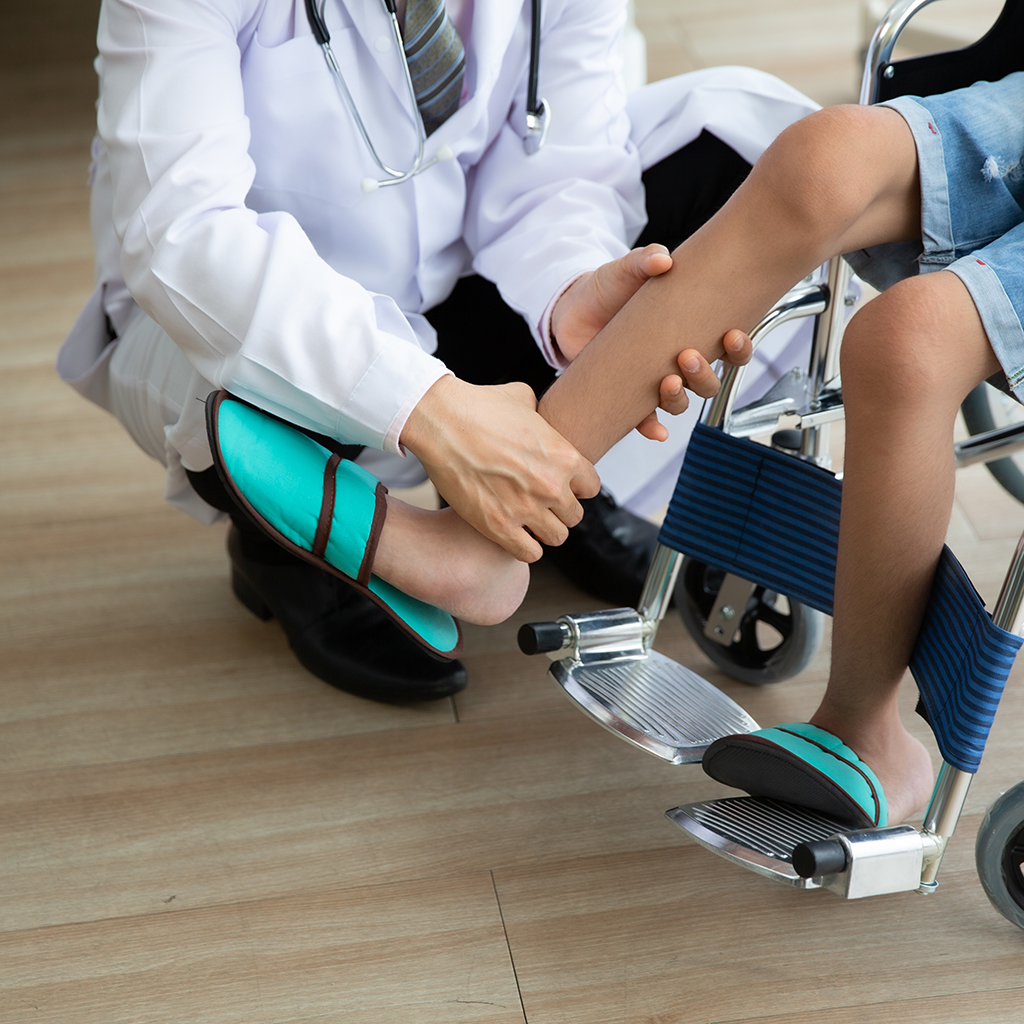What is Duchenne muscular dystrophy?

Publication date: 30-11-2022
Updated on: 28-04-2023
Topic: Pediatrics
Estimated reading time: 1 min
Article Author
Eleonora OrioliMedical Editor
Stefano Previtali
Editor and Translator
Viktoryia LuhakovaDuchenne muscular dystrophy is a rare inherited disease that progressively subverts the structure of muscle. The muscles of patients with this condition show degenerative aspects that gradually lead to the loss of normal motor function.
We discuss this disease and medical advances in its treatment with Dr. Stefano Previtali, neurologist and Head of the Neuromuscular Regeneration Research Unit at the Ospedale San Raffaele.
Which muscles are affected?
Duchenne muscular dystrophy affects muscles and leads to substantial degenerative processes that are insufficiently balanced by regenerative processes. The structure of muscle tissue is subverted, and much of it, instead of being made up of muscle fibers, becomes connective and fibrotic tissue, losing its contractile capacity.
The disease leads to severe muscle weakness and atrophy, involving the major muscles of patient's body. It affects mainly the following muscles in the following order:
- large muscles of the arms and legs;
- proximal muscles (those closest to the center of the body);
- distal muscles (those farthest from the center of the body);
- respiratory muscles;
- intercostal muscles;
- diaphragm;
- heart.
It never involves facial muscles or swallowing muscles.
The incidence of Duchenne muscular dystrophy
Duchenne disease is a pediatric, neuromuscular, inherited, and X-chromosome-linked condition that affects male subjects.
"The disease is found mostly in males. This is because the protein that causes Duchenne dystrophy, dystrophin, is encoded by a gene that is present on the X-chromosome," Dr. Previtali explains.
Duchenne dystrophy numbers can translate into:
- 1 in every 3,500 male births, the classic incidence, which has decreased to 1 in every 5,000 male births according to the latest estimates;
- 3.5 years, the average age at which the disease is diagnosed in Italy (in Europe the average diagnosis is made around 4.5 years).
Symptoms of Duchenne muscular dystrophy
"Duchenne muscular dystrophy has always been considered a pediatric disease: onset occurs in the first decade, although it has been present since birth, with rapid degeneration in youth and premature death.
The main warning for recognizing this type of pathology is Gowers' sign in the change of position: a typical movement in which the child tries to get up from supine position by leaning on surrounding supports or levering his or her legs with his or her arms," the neurologist says.
In general, other signs in affected children may be:
- delay in the onset of walking compared with average;
- tendency to stumble, awkward walking or difficulty walking, attitudes that may suggest a “lazy” child;
- more rarely, a mild cognitive type disorder or autism spectrum disorder.
When a child begins to show some of these alarm bells, it is helpful to visit a neurological specialist to undergo clinical examinations for the correct diagnosis.
Diagnosis
Today, specialists can make use of examinations such as:
- creatine kinase enzyme assay. Normal values are under 200 U/L; in affected individuals, values exceed the order of thousands.
- genetic examination, resulting from the objective examination and altered CK values, with outcome in about 1-2 months.
Therapy for Duchenne muscular syndrome
"For Duchenne disease, we do not yet have a therapy that can solve the problem," says Dr. Previtali, who has been working for years to find new therapeutic strategies and to identify the molecular mechanisms underlying some diseases, including this one.
Earlier in history, affected children quickly lost the ability to walk, and degeneration passed to other muscles just as quickly. The introduction of a multidisciplinary system of patient approach since the 1980s has, however, resulted in improved life and survival expectancy for affected patients.
"While there is no effective therapy, simply taking a corticosteroid therapy will improve the disease in all areas:
- ability to walk persists on average 2 years longer than the average for the disease;
- improvement in respiratory function;
- improvement in cardiac capacity."
Research bet: the cure
In addition to supportive therapy, researchers are working to find new therapies that can change the course of the disease.
"This is one of the investment fields we have been experiencing in recent years. The studies performed so far have not yet yielded satisfactory results, but we have numerous clinical trials (ongoing and planned) for this type of disease: we hope that some of these studies will give us positive results in the next 3-5 years.
New therapy studies will start next year at our center, in collaboration with other institutions in Europe and in the United States, including a new generation of synthetic oligonucleotides to restore synthesis of the missing, smaller, but functioning dystrophin protein."
Research is making progress, getting closer to a solution for this disease. The hope is high:
"We are in an era where therapies are coming. I am sure that in the next five years we will have something that works. When I started studying this disease besides making a diagnosis, there was nothing else I could do.
As of today, I can say that I will retire with a cure for the Duchenne muscular syndrome. From a medical point of view, this is an extraordinary thing, unimaginable until recently. We have high hopes," the neurologist concludes.